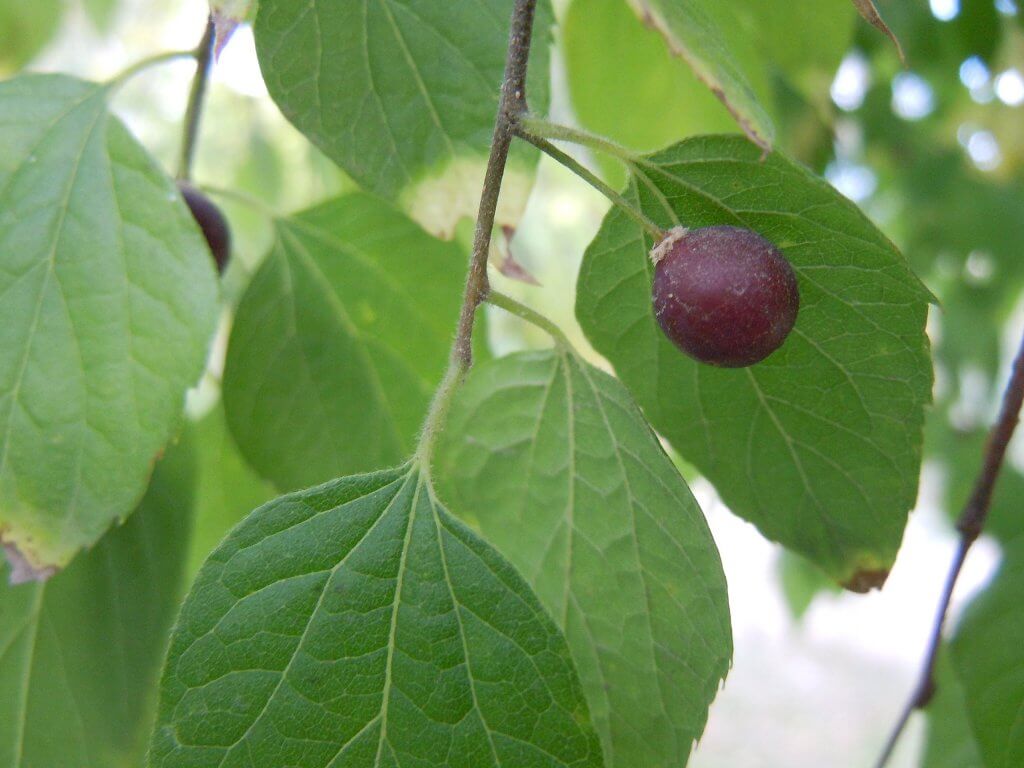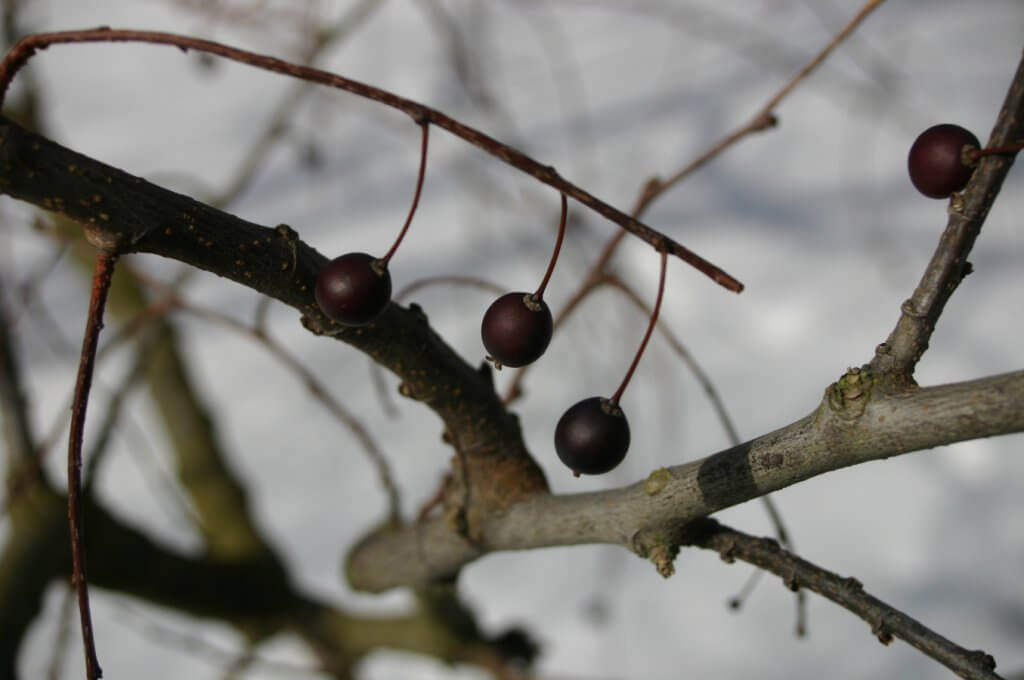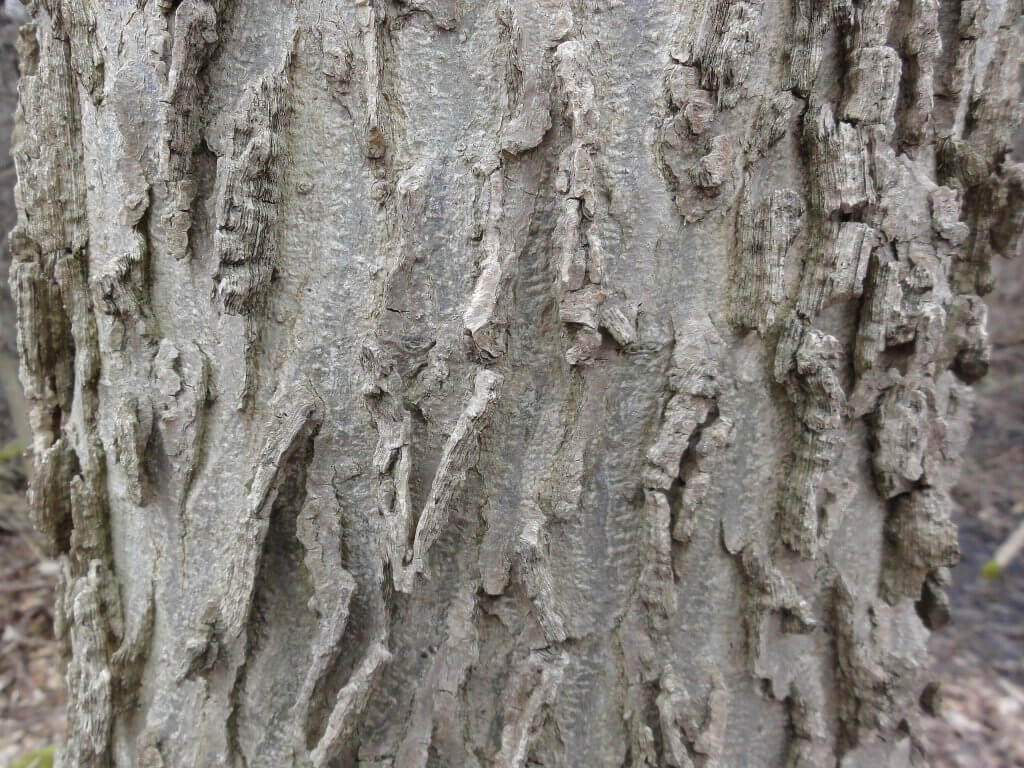Hackberry (Celtis spp.) is a hardwood deciduous tree that bears tiny red/purple, edible fruits. Two very similar species exist. The northern hackberry (Celtis occidentalis), also kown by a number of other names including, beaverwood, nettletree, American hackberry and simply, common hackberry. And also the southern hackberry (Celtis laevigata), also known as sugarberry.
Northern hackberry is native throughout the midwest and north eastern states. Whereas the southern hackberry can be found in the southeastern states, particularly Missouri and Georgia. Apart from their native range, both trees are extremely similar. They each bear similar fruits and similar leaf appearance. However they do tend to inhabit different areas. Northern hackberry is usually found in higher, sometimes rocky locations. Whereas southern hackberry, or sugarberry, is found in moist, nutrient rich soils near sources of water.

You’ll typically find them growing no larger than 20m in height, however optimal conditions can support trees that reach heights of almost 40m. The bark is light gray, with a fairly distinctive ridged, wart like pattern adorning the trunk. Leaves are long heart shapes, alternate, and have a slightly serrated edge. Small, inconspicuous, green flowers appear in late spring after the arrival of the leaves.
Edible parts and other uses
Only the fruits of a hackberry are edible. The thin flesh of the fruit has a sweet taste, although it is unlikely you will be able to harvest enough to create anything too meaningful with them.
The small seed within the fruit contains a nut which if collected, ground and mixed with water, can actually produce a milk, not unlike almond milk.
An alternate way to eat the berries is to grind the fruit, seed and all into a paste. This can be baked into small cookie shapes and eaten. Native Americans once did just this, roasting the paste into small energy rich snacks.

Cautions
Whilst foraging it is imperative that you correctly identify the fruits before eating. Red/deep purple berries are often noted for their toxic qualities, the red being a warning sign for animals and humans alike.
When foraging for hackberry be sure that you are within its native range, and usual habitat, and be sure to consult an official wild food identification book before eating.
Foraging
The yield of berries from a hackberry is not going to provide food for many. It tends to make a great walking or hiking snack, or even a small energy boost you can turn to whilst foraging for other wild foods.
The best time to collect the berries is in the fall when they start to ripen. They will sometimes stay on the tree until spring arrives the following year, however they are very popular with wildlife. So harvesting in fall gives you the best chance of collecting a good amount.
The leaves of hackberry are actually asymmetrical, which can help in identifying the tree. The bark also helps in identifying, as it has many raised ridges with a corky, layered appearance.

Did you know…
Many Native American groups used hackberries as an important fall and winter food source. The berries would be collected and eaten raw or ground and mixed with fat and other food items to roast over a fire. The Dakota also used hackberry fruits as a type of meat seasoning, by grinding the berries into a paste that the smoothed over meat before roasting.
Conclusion
These are not likely to fill your foraging basket, but the fruits of the hackberry trees are rewarding to harvest when you find them. They are highly nutritious, and a great source of calcium and protein. However be sure to correctly identify the tree before eating any berries.
—————Written by Hannah Sweet
Hannah is a freelance writer and graphic designer from the UK. With a penchant for travelling, photography and all things botanical, she enjoys writing about a wealth of topics and issues, from conservation and slow living, to design and travel. Learn more about her writing and design services at www.sweetmeanders.co
Many of our readers find that subscribing to Eat The Planet is the best way to make sure they don't miss any of our valuable information about wild edibles.
See our privacy policy for more information about ads on this site







6 Responses
Someone told me my tree is a wahoo tree…but Seek says it’s a form of hackberry. Are they the same?
Not at all the same! “Wahoo” tree is in the genus ‘Eunomys’ – the fruit and flowers look very different. Wahoo tree is not edible!
Sorry, typo, the genus is ‘Euonymus’
There are more species of hackberry than are described at the beginning of this otherwise very useful post. I actually landed here looking for ways to use our delicious Mediterranean hackberries (Celtis australis)! Thank you!
Found you online from a YouTube video but need to buy Hackberry fruits for my consumption only, not the tree – recommendation of where to buy is appreciated if you know.
The deer foraged on the leaves but the twig is alive and growing taller. I’ll wait for the meager berries in the fall.